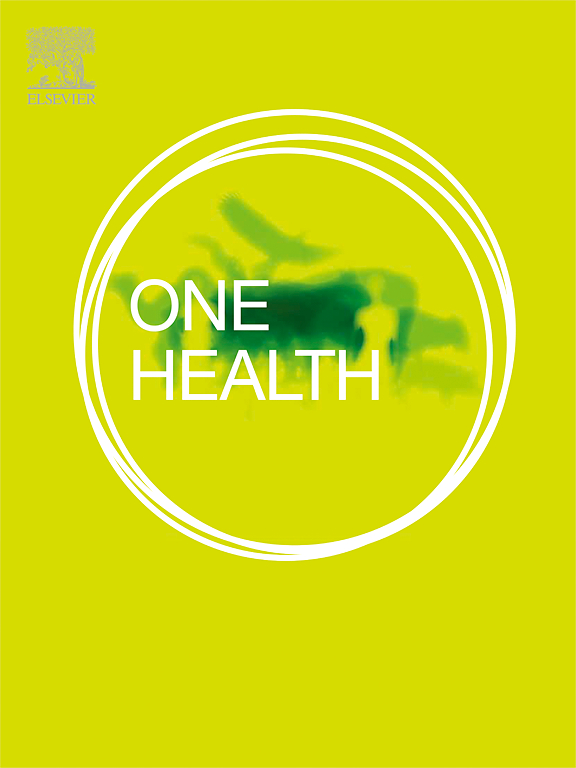中国鸡源H3禽流感病毒的流行病学、进化和生物学特性
IF 4.5
2区 医学
Q1 INFECTIOUS DISEASES
引用次数: 0
摘要
在中国禽流感流行病学调查中,我们从鸡中分离出4株H3型禽流感病毒。为了研究这些中国分离株与全球流行的H3病毒的遗传关系,我们对公开来源的2613种具有代表性的H3病毒的血凝(HA)基因进行了详细的系统发育分析,发现中国H3病毒的HA基因从欧亚谱系进化而来,并在国内的鸭类动物(主要是鸭子)中建立。贝叶斯系统动力学分析显示,华南地区(广东和广西)是H3病毒向中国其他地区传播的枢纽,病毒传播可能主要由家鸭驱动。值得注意的是,自2021年以来,H3N8/H3N3病毒的检出率一直在上升,这些H3病毒的主要宿主似乎已从鸭转移到鸡,在家禽种群中构成潜在的大流行威胁。本研究表明,G57 H9N2病毒HA蛋白受体结合袋周围抗原位点的氨基酸取代变化,以及内部基因重组,导致鸡的抗原性改变和适应性提高。本研究中的4株H3分离株获得了适应哺乳动物的多重突变,并在小鼠中表现出更高的致病性。这些发现强调,这些H3病毒在家禽中的持续进化构成持续的经济和大流行威胁,并强调需要继续监测来自家禽的H3病毒。本文章由计算机程序翻译,如有差异,请以英文原文为准。
Epidemiology, evolution, and biological characteristics of H3 avian influenza viruses isolated from chickens in China
During an epidemiological investigation of avian influenza viruses (AIVs) in China, we isolated four H3 AIVs from chickens. To investigate the genetic relationships of these Chinese isolates with the globally circulating H3 viruses, we performed a detailed phylogenic analysis of the hemagglutination (HA) genes of 2613 representative H3 viruses available in the public source, and found that the HA genes of H3 viruses in China evolved from the Eurasian lineage and became established in domestic Anseriformes (primarily ducks). Bayesian phylodynamic analysis revealed that the Southern China (Guangdong and Guangxi provinces) served as a hub for the H3 virus diffusion to other parts of China, and the virus dissemination was potentially primarily driven by domestic ducks. Of note, the rate of H3N8/H3N3 virus detection had been increasing since 2021, and the main host of these H3 viruses appeared to have shifted from ducks to chickens, posing a potential pandemic threat within poultry populations. Here we showed that changes in amino acid substitutions located at antigenic sites around the receptor binding pocket of the HA protein, together with internal gene recombination of G57 H9N2 viruses, causing altered antigenicity and improved adaptability in chickens. The four H3 isolates in this study acquired multiple mutations for mammalian adaption, and presented increased pathogenicity in mice. These findings emphasize that the continued evolution of these H3 viruses in poultry poses ongoing economic and pandemic threat, and highlight the need for continued surveillance of H3 viruses from poultry.
求助全文
通过发布文献求助,成功后即可免费获取论文全文。
去求助
来源期刊

One Health
Medicine-Infectious Diseases
CiteScore
8.10
自引率
4.00%
发文量
95
审稿时长
18 weeks
期刊介绍:
One Health - a Gold Open Access journal.
The mission of One Health is to provide a platform for rapid communication of high quality scientific knowledge on inter- and intra-species pathogen transmission, bringing together leading experts in virology, bacteriology, parasitology, mycology, vectors and vector-borne diseases, tropical health, veterinary sciences, pathology, immunology, food safety, mathematical modelling, epidemiology, public health research and emergency preparedness. As a Gold Open Access journal, a fee is payable on acceptance of the paper. Please see the Guide for Authors for more information.
Submissions to the following categories are welcome:
Virology,
Bacteriology,
Parasitology,
Mycology,
Vectors and vector-borne diseases,
Co-infections and co-morbidities,
Disease spatial surveillance,
Modelling,
Tropical Health,
Discovery,
Ecosystem Health,
Public Health.
 求助内容:
求助内容: 应助结果提醒方式:
应助结果提醒方式:


